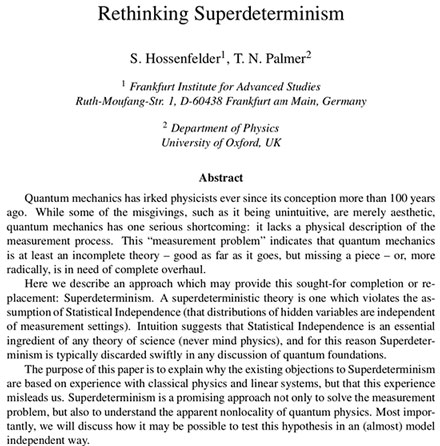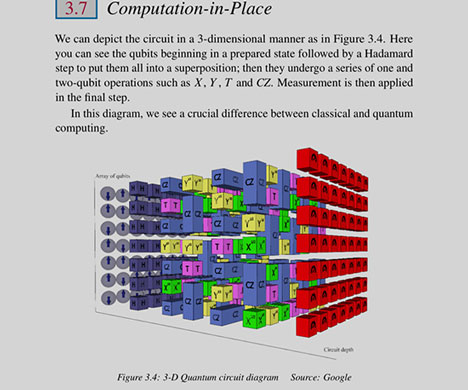Well, this week has not accomplished any sky observing, but did involve a lot of reading and study of heavy duty physicist wannabe topics. So be warned and fasten your seat belts! You all know that as successful as modern physics has been, there are still outstanding areas of physics which are mysterious and a better understanding is called for. My interest is first of all to understand the currently accepted theories and then lean back and wonder about the foundations of quantum mechanics that might also enable understanding of inflation, dark matter and dark energy.
So, first up, what brought this week to a week of study was a note from Math Whiz, Dave, who alerted us to a new (free) video lecture series by Nima Arkani-Hamed, titled "Spacetime and Quantum Mechanics, Total Positivity and Motives." Wow, I was not sure what to make of the title, but Nima is one of the premier innovative physicists trying to make progress in pushing the quantum to our next higher level of understanding. But, at the same time, I found the lectures, just having watched one and a half so far, way to difficult, even though Nima says that the lectures are pretty much self contained, for me, that only meant they were self contained if you were already a physics PhD!
I was however, quite excited by the new thinking that Nima discussed in this set of lectures and decided that it was time for me to go back over the basics of Quantum Field Theory (QFT) so that I would have a better chance of understanding what he was talking about. So, to that end, and you can follow along too if you choose, I looked for some earlier and easier Youtube lectures by Nima and came across the following on "Collider Physics from the Bottom Up." Since the current success of the Standard Model of Particle Physics is based on measurements made in large colliders, studying the physics of them tells us how these measurements let us in on the physics of particles.
 |
| Nima Arkani-Hamed on collider physics (Source: https://www.youtube.com/watch?v=mRMF4b0GcCw&feature=youtu.be) |
Wow, I found this lecture too difficult too, even though Nima says he tried to make them all self contained, the level of assumed background was a bit too much for me. Luckily, there were other YouTube videos on collider physics. The lecture by Mathew Schwartz was much easier to follow. He provided some physical background on the LHC and worked out some examples of beam size and luminosity and probabilities and cross sections for interaction bunches of counter rotating protons. Not every collision results in the type of reaction that one is looking for. It was neat to see how an enormous number of protons are required so that you get lucky enough to have just the right number of collisions that make the type of particle, like the Higgs for example, that you are looking for.
 |
| Mathew Schwartz, Harvard, lectures on collider physics at ICTP (Source: https://www.youtube.com/watch?v=htGK6ZK-KpI&feature=youtu.be) |
It turns out that Mathew Schwartz is the author of a pretty good book on Quantum Field Theory and the Standard Model. So, if you found the previous video lecture of interest, you can check out his textbook for more of the gory details. He does a good job of introducing all the background material needed to make sense of the Standard Model. I have tried for the last three years to make progress on learning the Standard Model and it has just been too difficult and it has taken a long time to gain the necessary background. I've had this textbook for several years now, as described previously in the blog post of October 10, 2018, but at that time I found the book still too difficult. This textbook, now might just be the thing needed to make it now after having done some more of the prerequisite material.
 |
| Study QFT and the Standard Model (Source: M. Schwartz, Quantum Field Theory and the Standard Model) |
After struggling through some of the chapters of the book, it became obvious that I was going to have to get some more background in the mathematics of group representations. Now in the past several physicist wannabes had studied groups using Howard Georgi's text, "Lie Algebras in Particle Physics" and Rober Klauber's text, "Student Friendly Quantum Field Theory" and Peskin and Schroeder's text, "An Introduction to Quantum Field Theory", but their purpose was more on the physics and not on the mathematics of group theory.
For instance you may recall that the Standard Model is described by the internal symmetries of the product group, SU(3) x SU(2) x U(1). But what does this symmetry group mean and why are we so lucky that the Standard Model of Particle Physics can be summarized by this product group?
Well, we can continue to study more of the physics, but since we were familiar with Peter Woit's work on "Quantum Theory, Groups and Representations", this textbook might offer a more mathematical description of the theory of groups, rather than just how they are used in physics. Hmm, this is a pretty technical book too, and it might take a lot of energy to go through it!
 |
| One way to get a fuller understanding of groups (Source: P. Woit, Quantum Theory, Groups and Representations) |
So you can see right away that study in one area of physics requires you to go back and study an earlier and easier prerequisite. In the meantime, if you want to get a little easier introduction to modern particle physics you should check out this very good set of lectures delivered in 2009 by Leonard Susskind, Stanford, who has a much easier style than any of the other authors. You can check out the remaining lectures too. I find that his style makes it easy to learn the basics in a more leisurely way, but not quite up to the level of mathematics necessary to actually do any real calculations. But that is what we have the two previously mentioned books for.
 |
| Leonard Susskind, Stanford, lectures on particle physics (Source: https://www.youtube.com/watch?v=2eFvVzNF24g&feature=youtu.be) |
Ok, let's take a break from physics and introduce an interesting book of philosophical speculation and see how it might apply to the foundations of quantum mechanics. In my philosophy Meetup, we review various philosophical concepts and for some time now we have been reviewing and discussing the German philosopher Nietzsche. So, let's use this example of our need to check all of our assumptions and classical physics intuitions and explore other "far out" interpretation or theory of the quantum world.
I don't know about you, but I have a hard time reading and understanding Nietzsche, even though I sense that he has some great insight into the world. This book by Southwell does a great job of providing an interpretation for the casual reader. In the book, "Beyond Good and Evil", Nietzsche discusses how we come to a theory of morality and he chides philosophers of the day, that they mostly just start with their own intuitive sense of right and wrong as evident in their own individual cultures and backgrounds, and then try to develop reasons and rationale for that viewpoint. But, Nietzsche says instead we should check all of our assumptions and look more widely at many more cultures in order to develop a theory of morality that is beyond good and evil. This seems to make sense if the goal of having a morality independent of any particular cultural setting is possible. Just keep in mind how the observer independent requirements of special relativity have been responsible for developing physics that is independent of any given observer.
Ok, ok, there seems to be something there, but the takeaway point for me is that we should do the same for our modern view of physics and we need to check all of our assumptions, many based on our classical physics intuitions. We have had about 90 years of the Copenhagen interpretation of quantum measurement and maybe in order to make further progress we need to check out assumptions and work out how to solve the measurement problem. To me, this is what modern physicists do when advocating for progress in the foundations of quantum mechanics, such as the Multi-Worlds version.
 | |
|
Sabine Hossenfelder, FIAS, is a another good physicist to follow when it comes to checking if our previous assumptions and tools are a good way of making progress in pushing physics to the next frontier. Her book, "Lost in the Math" states her view that physicists relying on beautiful concepts like symmetry have maybe run their course and are not going to be that helpful in moving forward. The use of symmetry was very beautiful and and was very instrumental in putting together the Standard Model, 40 years or so ago, but that it hasn't appeared to be very useful in helping us move forward now. So, some other principle or starting place or assumptions should be considered.
The approach that Sabine writes about here is called superdeterminsim, which she claims solves the measurement problem and shows how locality is preserved. This comes, at a cost from my perspective, of saying that the universe is more determined than we normally assume and that statistical measurements of quantum events, like the delayed choice measurement, may in reality not statistically independent as we assume. Hmm, this is pretty far out for me, but she says there are good arguments to support this point of view. She certainly puts forward a theory that goes right to the most fundamental assumption and foundational basis of quantum mechanics! Check out the paper and see if it makes any sense to you!
 |
| Abstract for paper explaining superedeterminism (Source: Hossenfelder & Palmer, arXiV:1912.06462v1) |
Finally, we can end up with an "aha moment" brought on by reviewing a book on quantum computing. We know that QM entails superposition and entanglement of state vectors and so too does quantum computing. When we do calculations in quantum mechanics to predict the outcome of some experiment we apply operators to the quantum state vector. Well, the same type of thing happens with quantum computers. Of several books on quantum computing, this one is one of the best and easiest to understand how the calculations and principles of quantum mechanics are applied.
 | |
|
A quantum computer is programmed by first of all initializing its internal qubit registers in superposition and entanglement states and then operating on those registers. The trick and ongoing research is how to perform operations on those states without letting them become contaminated and decohere by interacting with the environment, until the computation is completed. When the computation is completed, then a measurement of the registers is made, which destroys all superposition and entanglement, but the measurement gives us the final answer that has been computed. The textbook, by Jack Hidary, which is an easy self study book for the physicist wannabe, illustrated this necessary computation in place as shown in the figure below. The state of any given qubit cannot be copied, because of the no-cloning theorem, so all computation has to be done in place by successfully applying operators to each qubit.
 | |
|
Resident Astronomer George
Be sure to check out over 300 other blog posts on similar topics
If you are interested in things astronomical or in astrophysics and cosmology
Check out this blog at www.palmiaobservatory.com

No comments:
Post a Comment